Imagine walking down bustling city streets of Havana that are humming with life, past crumbling colonial buildings cast in bright shades of yellow, blue, pink and green, all high arched windows and narrow wrought iron balconies.
Old Chevrolets and Fords cruise past, belching fumes. All over the city, revolutionary billboards and graffiti emblazoned with stylised images of Fidel Castro and Che Guevara rally the populace to keep the faith.
As your day unfolds, you might find yourself cruising old Hemingway haunts, sauntering through the architectural gems of Habana Vieja, or immersing yourself in Afro-Cuban culture, street art and the Santería religion at Callejón de Hamel.
After a hard day pounding the pavements, you’ll most likely end up with the sea breeze in your hair as you stroll the Malecón at sunset, en route to an ice-cold Mojito and a chance to reflect on Cuba’s unique and vibrant capital.

We spent many happy days in Havana enjoying days not too dissimilar to this one. It’s a city full of colour and character, and one that can be easily explored on foot if you don’t mind clocking up a few kilometres in the process. You could wander for weeks, but to get you started, we’ve put together our personal Havana highlights, ten of the city’s standout experiences.
Join A Walking Tour Of Habana Vieja
While we love exploring cities under our own steam, Havana’s five-hundred-year-old historic centre – Havana Vieja – is the kind of place worth getting to know with a guide. The Habana Vieja walking tour offered by San Cristobal Agencia de Viajes – a specialist in Cuba’s historic and cultural heritage – is ideal for a more in-depth look at Havana’s UNESCO-listed old town.
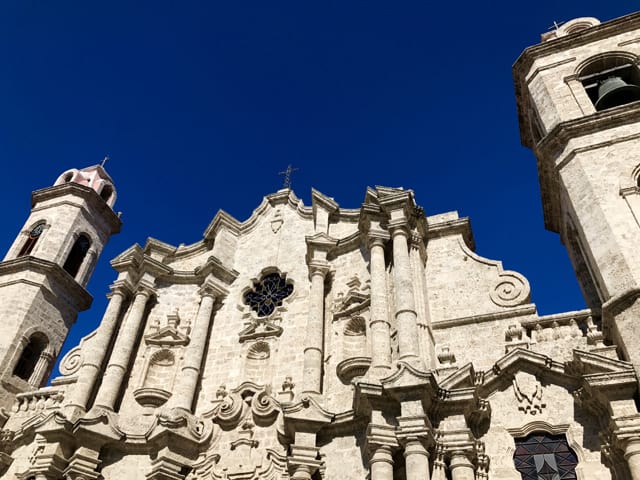
Over a couple of hours, we wandered the cobbled streets of Old Havana, taking in many of the city’s cultural and architectural high points, from the busy squares and notable buildings to places of historical significance. Our guide Alejandro was a wealth of knowledge about Havana and brought the city to life for us through story and anecdote.
San Cristobal Agencia de Viajes offers several history, art and culture tours in Havana and has an office on Calle de los Oficios in Havana Vieja, a short walk from the Basilica San Francisco de Asis. The walking tour was CUC/USD$20 each plus a tip.
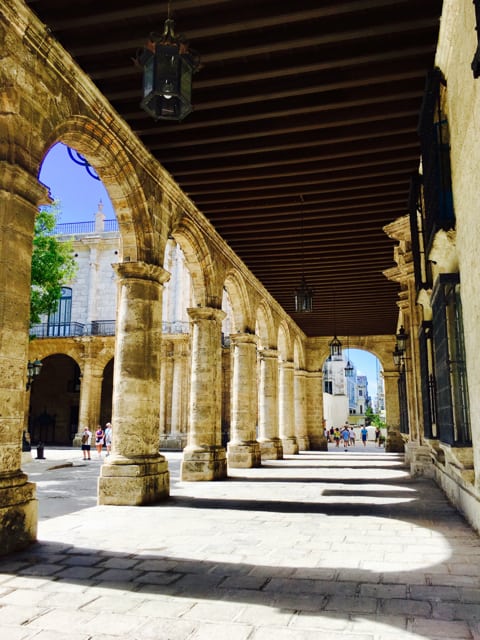
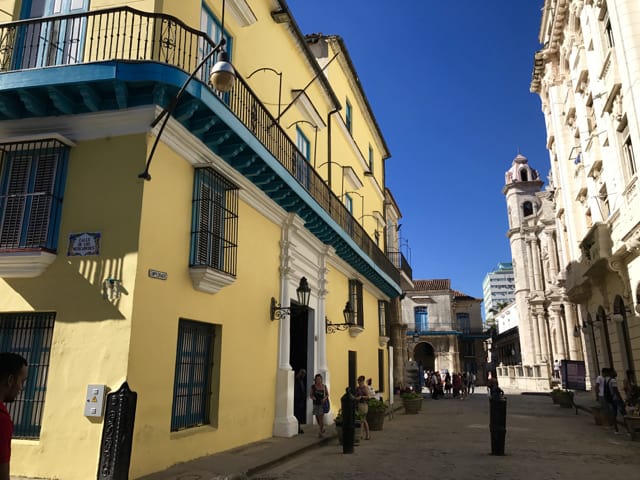
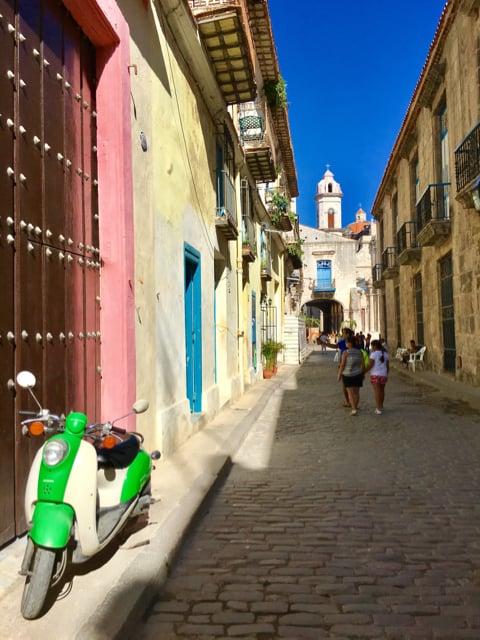
Get behind the scenery on a guided walking tour of Old Havana.
Take A Stroll Through Havana’s Necrópolis Cristóbal Colón
Havana’s largest necropolis encompasses fifty-six sprawling hectares of impressive stone and marble funerary monuments, all set around an impressive Central Chapel.
It’s worth spending an hour or two here taking in the quiet ambience and seeking out tombs of independence leaders, religious icons, novelists and politicians.
If you want to avoid getting completely lost like we did, stump up the extra cash for the guidebook and map at the entrance. Unofficial guides also loiter around the cemetery offering tours for tips.
The necropolis costs CUC/USD$5 to enter, and is in Havana’s Vedado suburb, a ten-minute taxi ride from the University of Havana. It’s also a stop on the hop-on hop-off bus route.

Enjoy Havana’s Colourful Architecture
Chances are you’ll have seen pictures of Havana streetscapes before you arrive in Cuba, but there’s nothing quite like plunging headfirst into the city’s colourful, characterful streets and laneways to really get a sense of the place.
Exploring cities by foot is a favourite activity for us, so our base near the university in the suburb of Vedado was perfect for long, meandering walks each day through the vibrant streets to the old town.
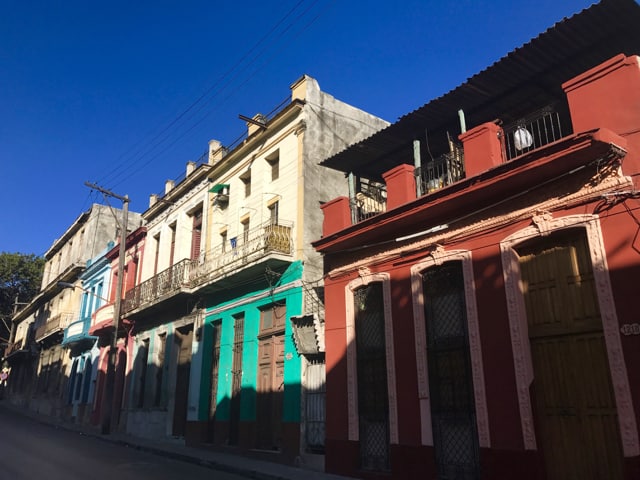
Wandering Havana’s uneven, pot-holed roads past crumbling, once-grand buildings is like a lesson in Architecture 101, covering a range of Spanish colonial styles with liberal smatterings of baroque, art nouveau, French classicism, modernism and art deco.
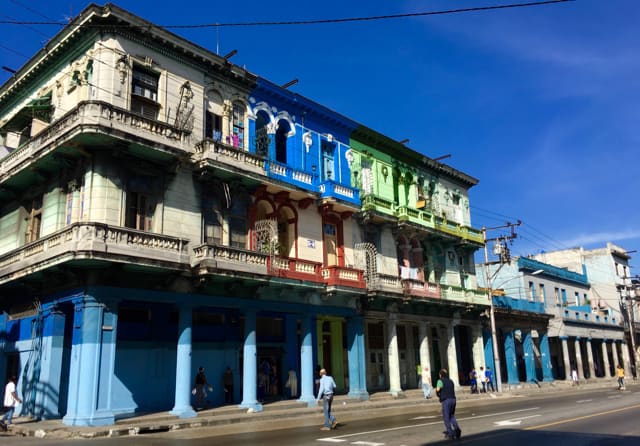
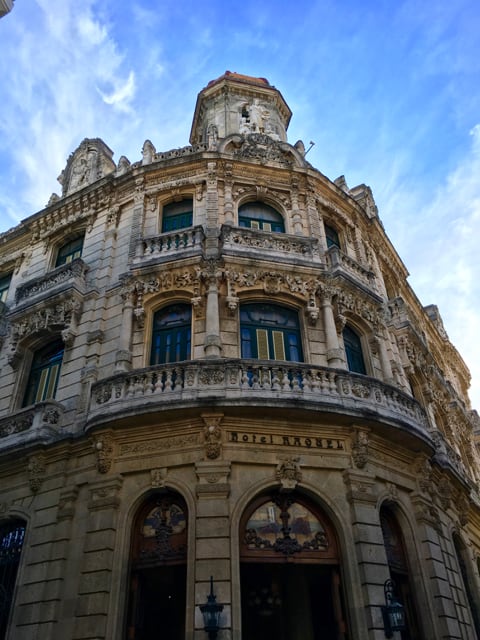
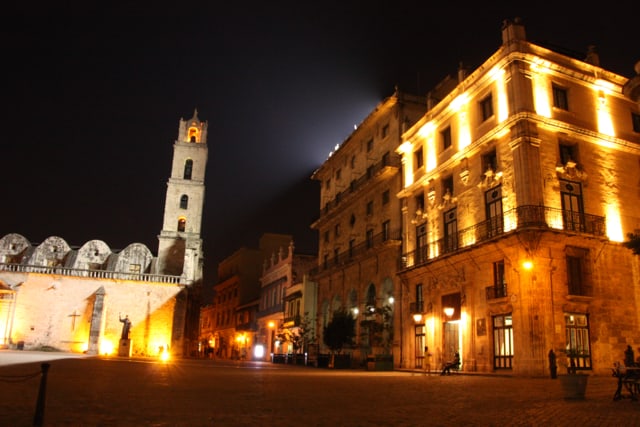
The melting pot of architectural styles will make most people’s lists of Havana highlights.
Watch The Sun Set Over Havana From Cristo De La Habana
For fantastic sunset views back across to Havana, you can catch a ferry for CUC/USD$1 from the terminal on Avenida del Puerto to Casablanca on the opposite side of the harbour, and take the short walk up to the panoramic viewpoint at the Christ of Havana statue.
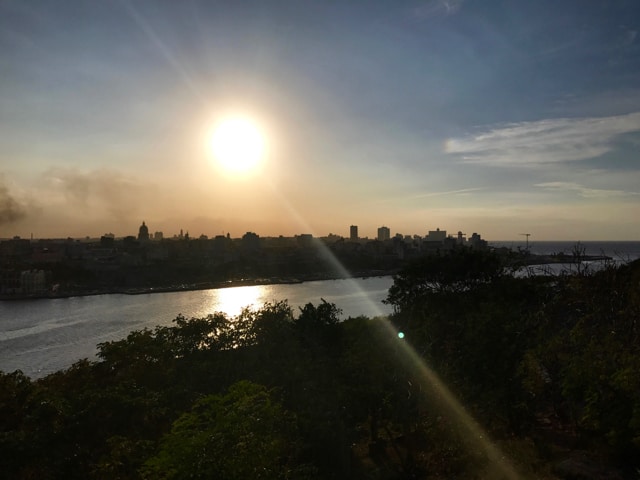
The 20-metre-high statue is close to the Parque Histórico Militar Morro-Cabaña, which encompasses two impressive fortifications built in the 16th and 18th-centuries to protect the city from invasion by foreign powers and pirates. It’s also possible to see cannons fired from here in the nightly cañonazo ceremony at 9pm.
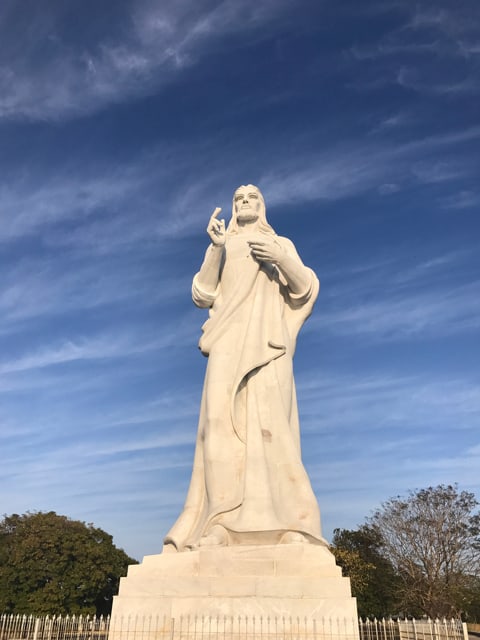
Peek Behind The Façade Of One Of Havana’s Grand Mansions
Havana is awash with evocative colonial-era mansions, some beautifully restored, others on the brink of collapse. Fortunately, some of these stately old buildings have been repurposed into hotels or museums, and it’s worth seeking them out for a glimpse of colonial Cuba.
One impressive example, in the suburb of Vedado, is the Florentine Renaissance-style mansion ‘La Dolce Dimora’, former residence of politician and diplomat Orestes Ferrara, and now home to the excellent Museo Napoleónico.
Born in Italy and migrating to Cuba at 21, Ferrara was obsessed with Napoleon Bonaparte, amassing a huge collection of Napoleon-related paraphernalia over his lifetime.
Today, the museum displays around 8,000 of these items, including Napoleon’s death mask. It’s a quirky, fascinating collection but the building itself is a treasure in its own right and turns out to be one of our unexpected havana highlights.
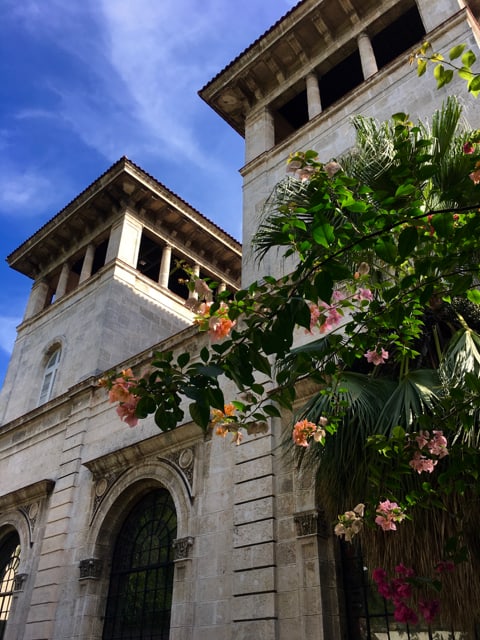
Cruise Havana’s Famous Malećon At Sunset
‘Cruising the Malecón’ is a thing in Havana, and the best time to join the throngs in this popular pastime is late afternoon or early evening when the heat of the day has subsided.
The Malecón, an 8-kilometre stretch of avenue and pathway that skirts the sea from Habana Vieja to Miramar, is a microcosm of Havana life.
As the sun drops over the city to the west, people begin to gather along the strip: groups of strutting teenage boys, young families, pensioners, runners, snack sellers, canoodling couples, fishermen, musicians and more. On the road, tourists glide by in open-top vintage cars, hair streaming. This is people-watching at its best.
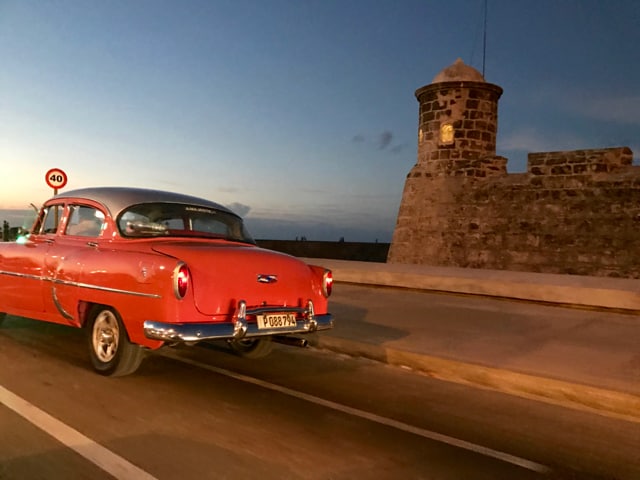
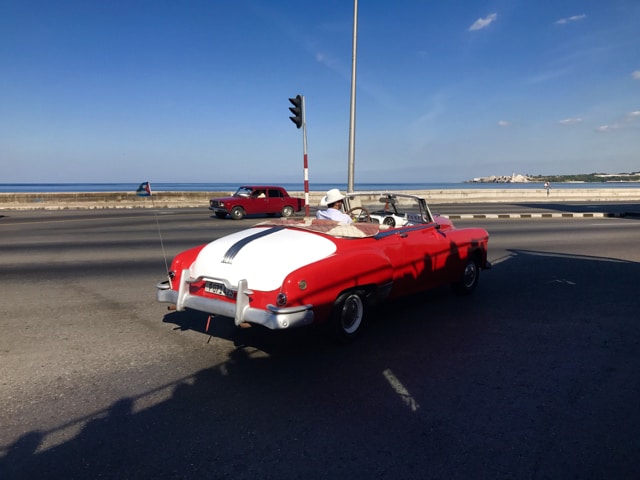
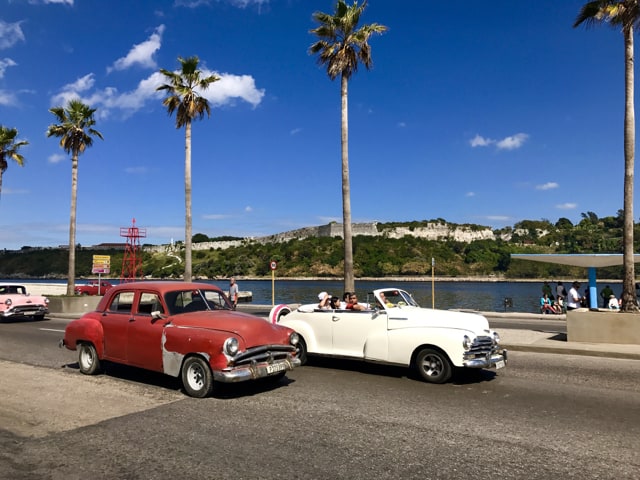
You can cruise the Malecón any time of day, but late afternoon / evening is the best time.
Marvel At Cuba’s Classic Car Collection
Old cars are often at the top of people’s list of Havana highlights. Cuba is renowned for its vintage cars, a unique situation resulting from a trade embargo that has dragged out for more than 60 years.
Classic they may be, but for many, these chrome-and-stainless-steel relics of the 1950s are a way of life, and their owners have mastered the mechanics of keeping them on the road despite a lack of parts and the progress of engineering.
You’ll see classic cars everywhere in Havana, and will most likely ride in one or two during your time in the country (our favourite share taxi experience was in a beautifully-restored vintage Chevrolet Bel Air). Check out our Cuban classic cars gallery for an idea of what you can expect.
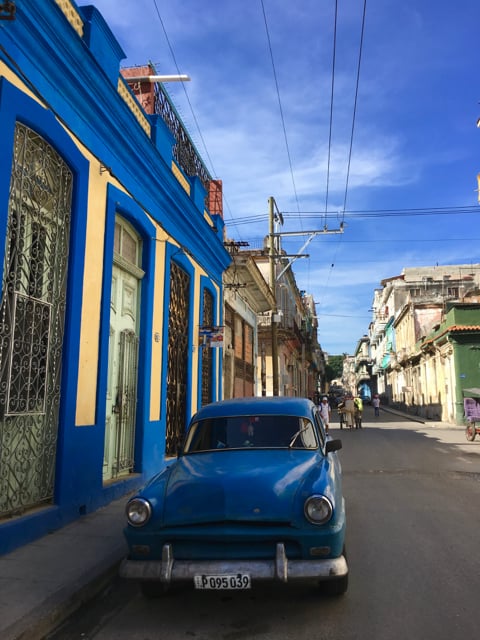
Hop On The Havana Bus Tour
Sure, it’s touristy, but we quite enjoy a good hop-on hop-off bus tour when we arrive in a new city. It’s an awesome way to orient yourself and get a sense of places you might like to revisit on foot. It’s also makes a nice break when you’ve been pounding the pavement for a while.
Havana’s hop-on hop-off bus is called Habana Bus Tour and there are three routes covering the key areas of interest in the city. We travelled Route T1, which cost CUC/USD$10 and covered the Malecón, the old town, Plaza de la Revolución, and the Necrópolis Cristóbal Colón.
Brush Up On Cuba’s Revolutionary History At The Habana Libre Hotel
Perhaps one of Havana’s most iconic buildings, the Habana Libre Hotel in Vedado was built in the late 1950’s as the Havana Hilton during the Batista regime. Less than a year after opening, the hotel had been commandeered by a group of revolutionaries led by Fidel Castro and renamed Habana Libre.
For a few months in 1959, Cuba was led from a suite on the 24th floor of the hotel. In the lobby, you’ll find a small but interesting black-and-white photo exhibition showing the early days of the revolution, including pics of Castro and his comrades wielding guns and smoking cigars in the same hotel lobby.
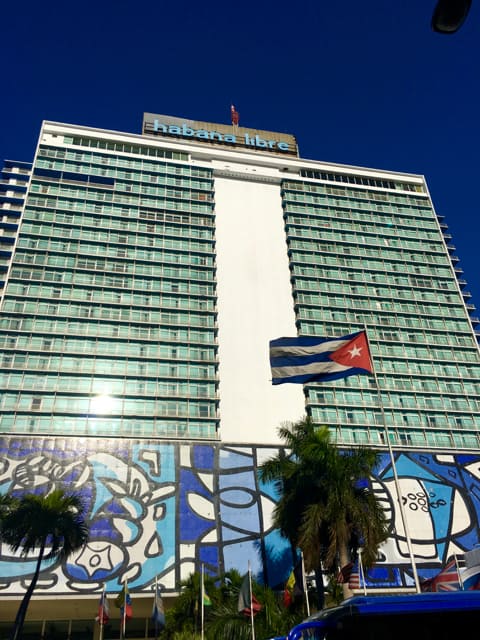
Join The Sunday Afternoon Beat On Callejón de Hamel
From noon each Sunday, Callejón de Hamel, a narrow street in Havana’s suburb of Centro, comes alive to the beat of rumba as local Santería practitioners summon up the spirits…or put on a show for the tourists, depending on your beliefs.
While we arrived too late for the drums, the colour, movement and energy on this vivid, mural-lined street was palpable. Stop for a drink in one of the small bars and enjoy the atmosphere.

Good to know
Getting to Havana
With the relaxing of commercial travel restrictions between the USA and Cuba, it’s never been easier to visit Havana. Direct flights now operate from the UK, Canada and a host of cities in Europe, USA and all across the Americas. We opted for the short one-hour hop from Cancun to Havana with Interjet, which cost less than US$100 per person one-way.
Getting around Havana
From the airport, we paid CUC/USD$30 to taxi to our Casa Particulare in Havana’s suburb of Vedado. Agree the price before setting out.
The cheapest, and for us the most enjoyable mode of transport in Havana is walking. Havana is very walkable and it’s a great way to get a real feel for the city.
If you have passable Spanish, you could consider using the shared collectivo taxis that operate all over the city. They run on set routes with set fares per passenger in local money (CUP), not the tourist currency (CUC).
Tourist taxis are everywhere, both metered taxis that you’ll usually find outside the bigger hotels, and battered older taxis that you can pick up all over the city and for which you’ll need to negotiate a price before you travel. Likewise with the Coco Taxis, the city’s yellow, three-wheeled motorbike rickshaws. In our experience, most will try and charge you at least double the real fare at the outset of negotiations.
There is also an extensive local bus network running across Havana, which we didn’t get to use on our visit.
If you have a question or comment, drop us a message below. For more tips and info on planning a trip to Cuba, head over to our Cuba page.
